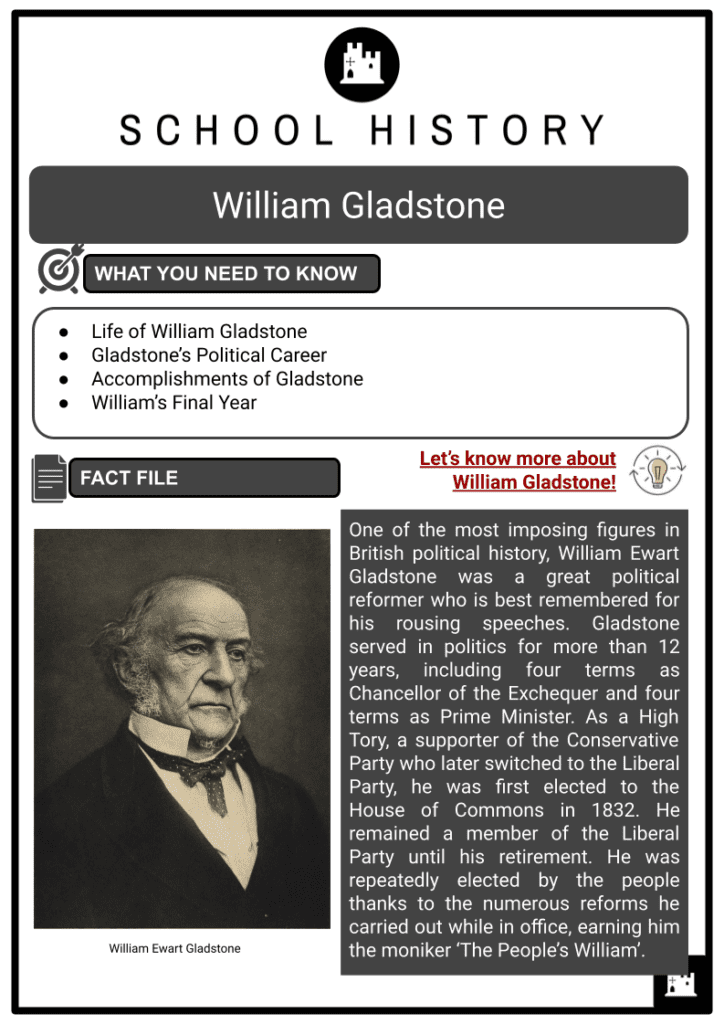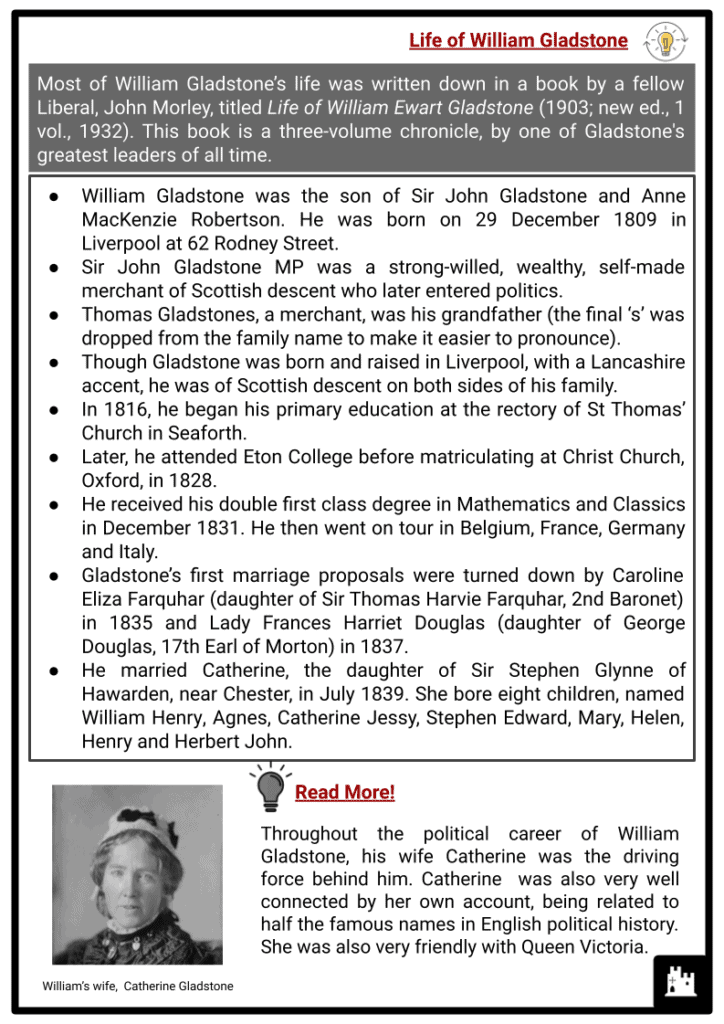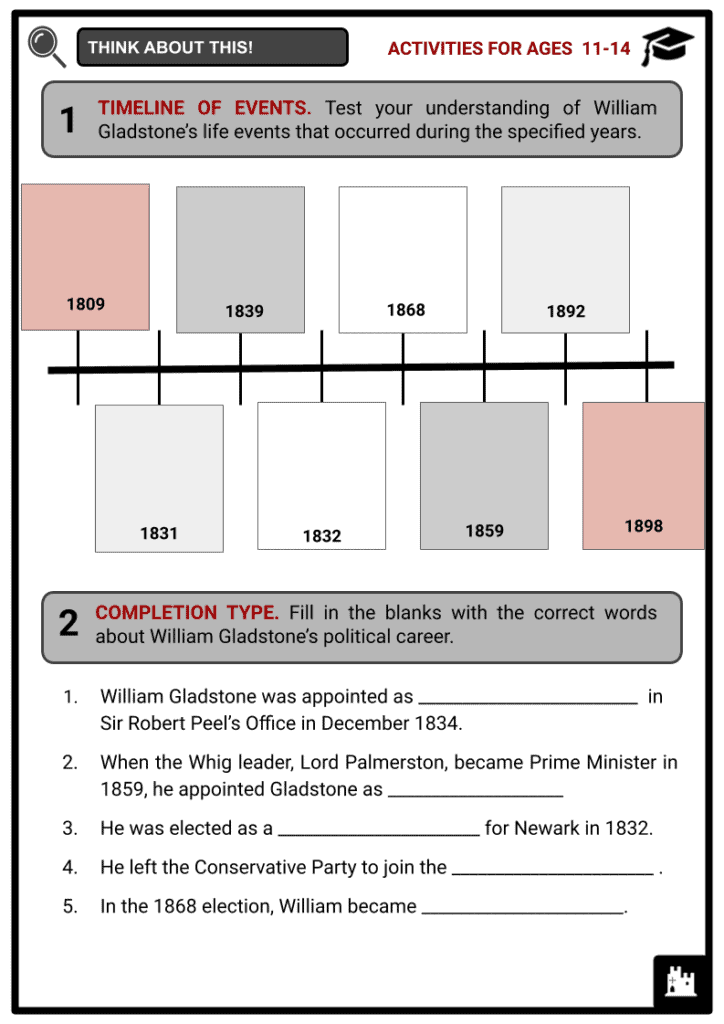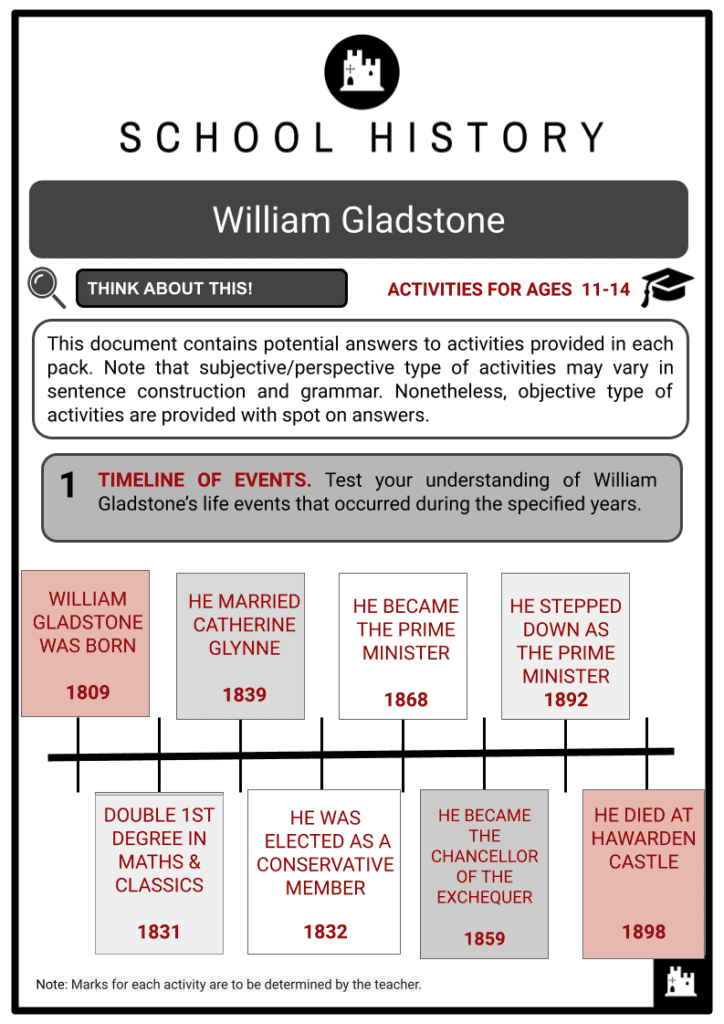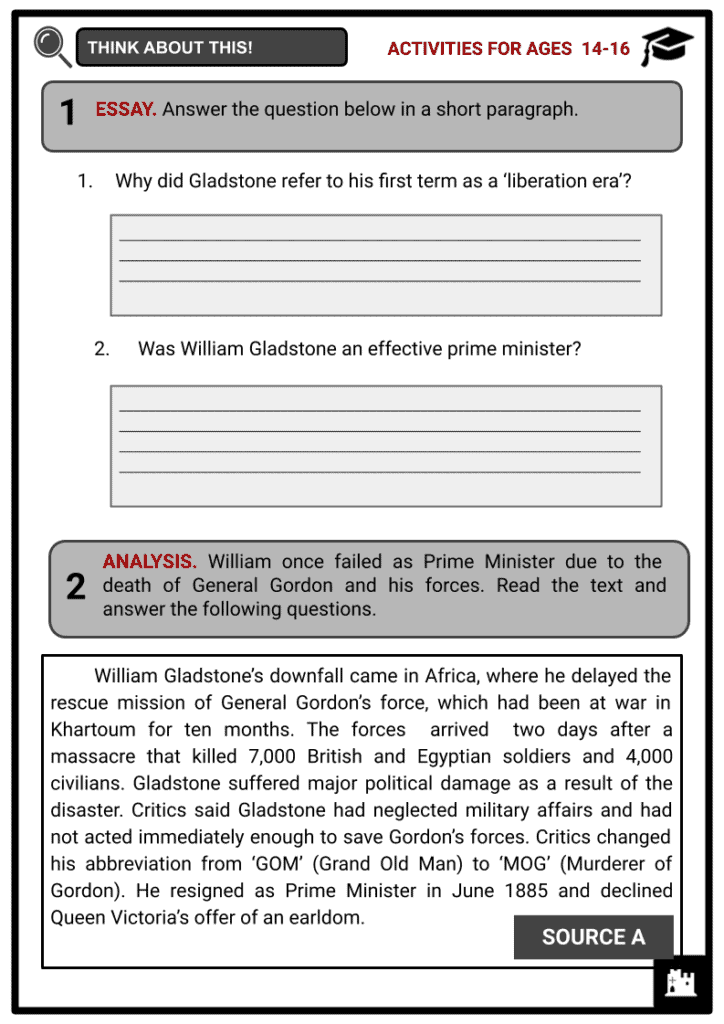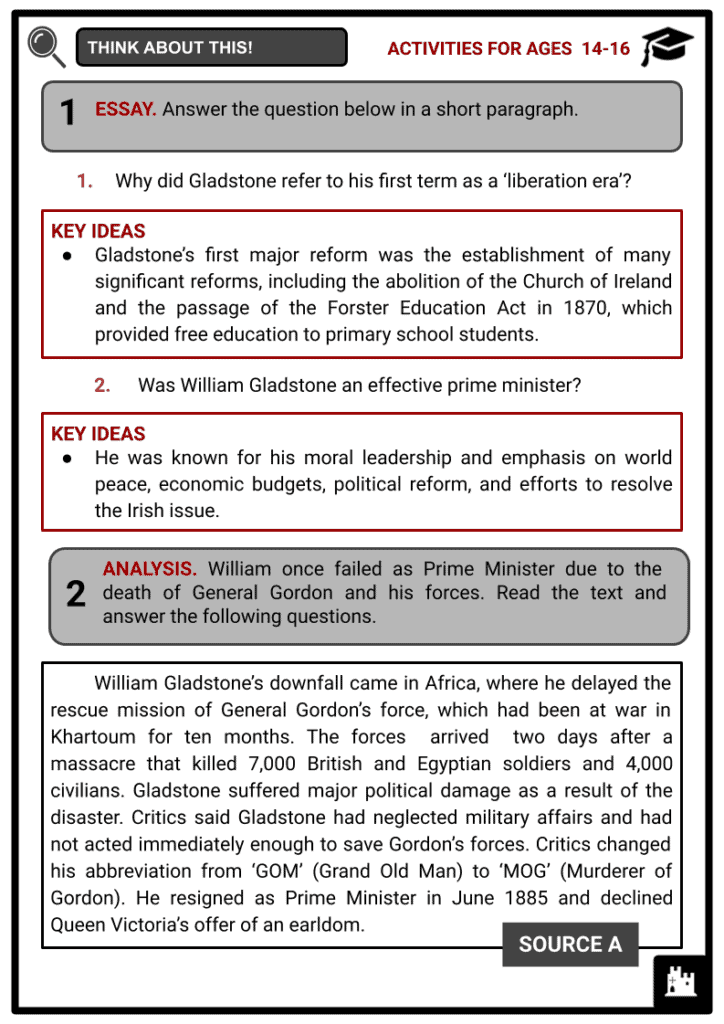William Gladstone Worksheets
Do you want to save dozens of hours in time? Get your evenings and weekends back? Be able to teach about William Gladstone to your students?
Our worksheet bundle includes a fact file and printable worksheets and student activities. Perfect for both the classroom and homeschooling!
Summary
- Life of William Gladstone
- Gladstone’s Political Career
- Accomplishments of Gladstone
- William’s Final Year
Key Facts And Information
Let’s find out more about William Gladstone!
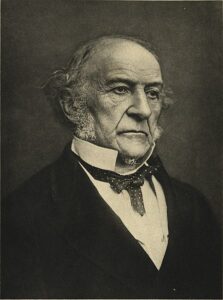
One of the most imposing figures in British political history, William Ewart Gladstone was a great political reformer who is best remembered for his rousing speeches. Gladstone served in politics for more than 12 years, including four terms as Chancellor of the Exchequer and four terms as Prime Minister. As a High Tory, a supporter of the Conservative Party who later switched to the Liberal Party, he was first elected to the House of Commons in 1832. He remained a member of the Liberal Party until his retirement. He was repeatedly elected by the people thanks to the numerous reforms he carried out while in office, earning him the moniker ‘The People’s William’.
Life of William Gladstone
- Most of William Gladstone’s life was written down in a book by a fellow Liberal, John Morley, titled Life of William Ewart Gladstone (1903; new ed., 1 vol., 1932). This book is a three-volume chronicle, by one of Gladstone's greatest leaders of all time.
- William Gladstone was the son of Sir John Gladstone and Anne MacKenzie Robertson. He was born on 29 December 1809 in Liverpool at 62 Rodney Street.
- Sir John Gladstone MP was a strong-willed, wealthy, self-made merchant of Scottish descent who later entered politics.
- Thomas Gladstones, a merchant, was his grandfather (the final ‘s’ was dropped from the family name to make it easier to pronounce).
- Though Gladstone was born and raised in Liverpool, with a Lancashire accent, he was of Scottish descent on both sides of his family.
- In 1816, he began his primary education at the rectory of St Thomas’ Church in Seaforth. Later, he attended Eton College before matriculating at Christ Church, Oxford, in 1828. He received his double first class degree in Mathematics and Classics in December 1831. He then went on tour in Belgium, France, Germany and Italy.
- Gladstone’s first marriage proposals were turned down by Caroline Eliza Farquhar (daughter of Sir Thomas Harvie Farquhar, 2nd Baronet) in 1835 and Lady Frances Harriet Douglas (daughter of George Douglas, 17th Earl of Morton) in 1837. He married Catherine, the daughter of Sir Stephen Glynne of Hawarden, near Chester, in July 1839. She bore eight children, named William Henry, Agnes, Catherine Jessy, Stephen Edward, Mary, Helen, Henry and Herbert John.
- Throughout the political career of William Gladstone, his wife Catherine was the driving force behind him. Catherine was also very well connected by her own account, being related to half the famous names in English political history. She was also very friendly with Queen Victoria.
Gladstone’s Political Career
- Gladstone’s political career lasted for over 60 years. General principles and moral ideas dominated the God-fearing Liverpudlian’s thinking. He applied his Christian values to politics, stating “nothing that is morally wrong can be politically right”.
- He was elected as a Conservative Member of Parliament for Newark in 1832 after returning from his tour.
- He was appointed Junior Lord of the Treasury in Sir Robert Peel’s office in December 1834 and later became Under-Secretary of State for War and the Colonies.
- Robert Peel appointed him as the Vice-President of the Board of Trade and he was promoted to President in 1843.
- When the Whig leader, Lord Palmerston, became Prime Minister in 1859, he appointed Gladstone as Chancellor of the Exchequer.
- He left the Conservative Party to join the Liberals and ran for office in South Lancashire in 1865, and eventually became the leader of the House of Commons and Chancellor of the Exchequer.
- The Conservative Party lost the general election in December 1868, and Gladstone, the leader of the Liberal Party at the time, became Prime Minister.
- Gladstone’s first Cabinet (1868–1874) was generally acknowledged as the most capable of the century. The prime minister aimed to oversee the work of each department while focusing his primary efforts on Irish and foreign policy.
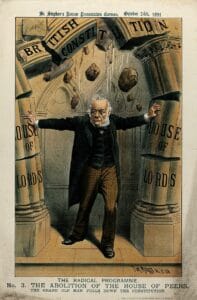
St. Stephen’s Review Presentation Cartoon Released in 24 October 1891
Read More!
Many government departments used to send documents to ministers in red boxes. The most well-known is the Chancellor of the Exchequer’s red ‘budget box’. This was William Ewart Gladstone’s budget box. Gladstone was Chancellor four times between 1852 and 1882, in addition to his four terms as Prime Minister.
- In the 1874 general election, however, he was defeated by Conservative leader Benjamin Disraeli.
- British historians have described Gladstone and Disraeli as the most ruthless rivals and two excellent feuding politicians.
- The Liberal Party was successful in the next election, held in 1880, and Gladstone was elected Prime Minister for the second time.
- Gladstone delayed the rescue mission of General Gordon’s force, which had been at war in Khartoum for ten months, and as a result, suffered major political damage.
- He resigned as Prime Minister in June 1885 and declined Queen Victoria’s offer of an earldom.
- In 1886, the Liberals won the election again, and he was elected Prime Minister for the third time. One of his major accomplishments after his victory was convincing Parliament to accept Irish Home Rule.
- In the 1892 general election, he was re-elected, and once again became Prime Minister, this time on 15 August 1892.
- He stepped down on 2 March 1894, at the age of 84, making him the oldest prime minister in British history.
Read More!
The cartoon depicts William Gladstone pushing and breaking the pillars that contained the "British Constitution" and the "House of Lords." The foundation of the British Constitution was depicted as the House of Lords. Gladstone was a member of the House of Commons, which almost always opposed the ideas of the House of Lords and vice versa.
Accomplishments of Gladstone
- Gladstone’s major works include the following:
- When Gladstone took over as Prime Minister following the retirement of Prime Minister John Russell, he introduced many significant reforms, including the abolishment of the Church of Ireland and the passage of the Forster Education Act in 1870, which provided free education to primary school students.
- In 1883, he implemented the Corrupt Practices Act, which established the amount of money spent by politicians on election campaigning. This was a significant step in reducing corruption in British politics.
- In the Reform Act of 1884, he proposed giving the male working-class the same voting rights as everyone else in town. The proposal was later merged into a law which stated that adult male owners and their ten tenants, amounting to approximately six million men, were permitted to practise franchise.
- He established St Deiniol’s Library, a public library in Hawarden, in 1895, at the age of 85. He dragged his personal library of 32,000 books three-quarters of a mile from his house to the library. His daughter stated that he wished to “bring together books who had no readers with readers who had no books”.
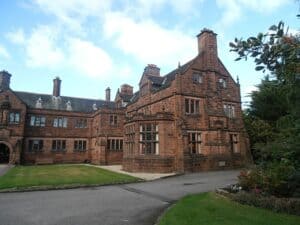
Gladstone’s Library
Read More!
Gladstone’s Library (formerly known as St Deiniol’s Library until 2010) was founded by William Gladstone in 1894. It is a residential library in Hawarden, Flintshire, Wales. It is a Grade I listed building and a registered charity. Gladstone’s Library is the only Prime Ministerial Library in the United Kingdom, as well as the national memorial to William Ewart Gladstone. It houses over 250,000 printed items, including theological, historical, cultural and political materials.
William’s Final Year
- After retirement from his political career, William spent time with his family, donating and giving inspirational speeches. His funeral was held at the Abbey and several members of the royal family attended.
- At the age of 85, Gladstone donated £40,000 (approximately £4.65 million today) and a large portion of his 32,000-volume library to St Deiniol’s Library (Gladstone’s Library since 2010) in Hawarden, Wales. It all started with 5,000 items at his father’s home in Fasque, which were moved to Hawarden for research in 1851.
- In his final notable speech, delivered in Liverpool in 1896, he condemned the Ottoman massacres of Armenians.
- Gladstone and his wife stayed in Cannes in the early months of 1897. Gladstone met Queen Victoria, and she shook his hand for the first time as far as he could remember in the 50 years he had known her.
- Gladstone stayed in Cannes from the end of November 1897 to mid-February 1898 on the advice of his doctor, following an attack of facial neuralgia. Gladstone then went to Bournemouth, where a swelling on his palate was diagnosed as cancer on 18 March.
- Gladstone died peacefully at Hawarden Castle on 19 May 1898 at five o’clock in the morning, due to heart failure and advanced age-related infirmity. William Gladstone died next to his wife Catherine and eight children. He was 88.
- During Gladstone’s state funeral at Westminster Abbey, the Prince of Wales (the future Edward VII) and the Duke of York (the future George V) served as pallbearers.
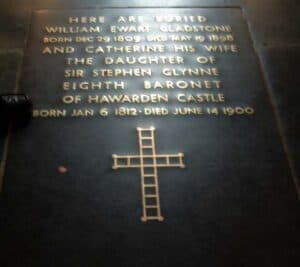
Gladstone's grave in Westminster Abbey - Hawarden Castle. Hawarden Castle is a house in the Welsh town of Hawarden, Flintshire. It was previously owned by the family of William Gladstone’s wife, Catherine Glynne. It was built in the mid-18th century and later enlarged and externally redeveloped in the Gothic style.
- Gladstone’s grave in Westminster Abbey. Gladstone was laid to rest in Westminster Abbey. His grave is near the burial site of Pitt, Palmerston, Canning and Peel, and next was his lifelong political competitor, Lord Benjamin Disraeli. His wife, Catherine, was also laid next to him.
Image Sources
- https://en.wikipedia.org/wiki/William_Ewart_Gladstone
- https://upload.wikimedia.org/wikipedia/commons/thumb/c/cf/Gladstone_pushing_pillars_representing_the_House_of_Lords_Wellcome_V0050358.jpg/800px-Gladstone_pushing_pillars_representing_the_House_of_Lords_Wellcome_V0050358.jpg
- https://en.wikipedia.org/wiki/Gladstone%27s_Library
- https://commons.wikimedia.org/wiki/File:Gladstonegrave.jpg

